
MONATSHEFTE FUR CHEMIE
Scope & Guideline
Exploring Chemistry's Rich Legacy and Future Innovations
Introduction
Aims and Scopes
- Electrochemical Sensing and Analysis:
A significant portion of the journal's publications is dedicated to electrochemical methods for the detection and analysis of various compounds, including pharmaceuticals, environmental pollutants, and biological markers. This includes the development of novel sensors and methodologies that enhance sensitivity and selectivity. - Synthesis and Characterization of Chemical Compounds:
The journal features numerous studies on the synthesis of new chemical entities, including organic compounds, catalysts, and nanomaterials. These works often involve detailed characterization using advanced techniques to confirm the structure and properties of synthesized materials. - Green Chemistry and Sustainable Practices:
There is a consistent focus on green chemistry approaches, including environmentally friendly synthesis methods and the development of sustainable materials. This includes the use of renewable resources and the minimization of waste in chemical processes. - Pharmaceutical Chemistry and Drug Development:
Research related to pharmaceutical chemistry is prevalent, covering the synthesis of drug candidates, their biological evaluation, and the exploration of new therapeutic mechanisms. The journal highlights advancements in drug delivery systems and the use of nanotechnology in pharmaceuticals. - Computational Chemistry and Theoretical Studies:
The journal also embraces computational chemistry, presenting studies that utilize theoretical models to predict chemical behavior, optimize reaction pathways, and understand molecular interactions. This area supports experimental findings and aids in the design of new compounds.
Trending and Emerging
- Nanotechnology and Nanomaterials:
There is a notable increase in research related to nanotechnology, particularly in the synthesis and application of nanomaterials for sensing, drug delivery, and catalysis. This trend underscores the importance of nanoscale materials in advancing chemical applications. - Biochemical and Biomedical Applications:
Emerging themes in biochemical and biomedical research are on the rise, particularly studies involving drug development, biomolecular interactions, and the application of chemical principles to health-related issues. This trend reflects a growing interdisciplinary approach to chemistry. - Sustainable Energy Solutions:
Research focused on sustainable energy, including battery technology, fuel cells, and solar energy conversion, is gaining momentum. The journal is increasingly publishing studies that address energy challenges, promoting innovation in sustainable chemistry. - Artificial Intelligence in Chemistry:
The integration of artificial intelligence (AI) in chemical research is becoming more prominent, with studies exploring computational tools for predicting chemical properties and optimizing reactions. This reflects a broader trend of incorporating machine learning and AI into chemical methodologies. - Environmental Chemistry and Pollution Control:
There is a rising interest in environmental chemistry, particularly in the development of methods for detecting and mitigating pollution. This includes studies that focus on the analysis of contaminants and the design of eco-friendly chemical processes.
Declining or Waning
- Traditional Organic Synthesis Techniques:
There has been a noticeable decline in publications focused on conventional organic synthesis methods. As the field moves towards more efficient and sustainable approaches, traditional techniques may be viewed as less relevant, leading to fewer studies in this area. - Inorganic Chemistry without Practical Applications:
Research that focuses solely on the theoretical aspects of inorganic chemistry, without a clear application or relevance to practical problems, appears to be waning. The trend seems to favor studies that connect inorganic chemistry to real-world applications, such as catalysis or materials science. - Basic Analytical Techniques without Innovation:
There is a reduction in papers that describe basic analytical techniques without innovative improvements or applications. The field is increasingly favoring more advanced methodologies that provide enhanced capabilities over traditional approaches.
Similar Journals
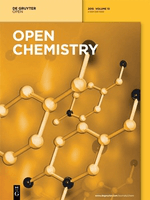
Open Chemistry
Illuminating the Path of Chemical InnovationOpen Chemistry, published by DE GRUYTER POLAND SP Z O O, is a distinguished peer-reviewed journal that has been serving the global chemistry community since its inception. With an ISSN of 2391-5420 and an E-ISSN also of 2391-5420, this open-access journal has been accessible to researchers and practitioners alike since 2015, ensuring a wide dissemination of high-quality research findings. Located in Germany, specifically at BOGUMILA ZUGA 32A STR, 01-811 WARSAW, MAZOVIA, POLAND, Open Chemistry aims to publish innovative research across various chemical disciplines, with special attention to miscellaneous chemistry and materials chemistry. It is currently ranked in the Q3 category for both fields as of 2023, reflecting its solid standing within the academic community, with specific ranks of 187/408 in General Chemistry and 153/317 in Materials Chemistry, corresponding to respective percentiles of 54 and 51. Open Chemistry not only enhances the accessibility of cutting-edge research but also serves as a vital resource for students, professionals, and scholars seeking to advance their knowledge in the rapidly evolving landscape of chemical sciences.

JOURNAL OF THE INDIAN CHEMICAL SOCIETY
Advancing Chemical Knowledge from India to the WorldJournal of the Indian Chemical Society, published by Elsevier, stands as a cornerstone in the field of chemistry, particularly representing the rich chemical research emanating from India.
With a significant history dating back to its establishment, this journal encompasses diverse disciplines including Drug Discovery, Electrochemistry, Inorganic Chemistry, Organic Chemistry, and Physical and Theoretical Chemistry, reflecting the evolving landscape of chemical sciences.
Despite being positioned in the Q3 category across multiple quarters, the journal demonstrates promising rankings in various chemistries, highlighting its commitment to advancing the knowledge and application of chemical sciences. While currently not available as an open access journal, the Journal of the Indian Chemical Society is dedicated to providing a platform for high-quality research that fosters innovation and collaboration among researchers, professionals, and students worldwide.
With its continuous publication from 1973 to the present, it serves as an essential repository for cutting-edge findings and developments in chemistry, striving to connect academia with industry and practice.
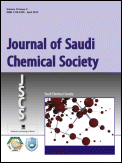
Journal of Saudi Chemical Society
Advancing Chemistry Knowledge, One Article at a Time.The Journal of Saudi Chemical Society, published by ELSEVIER, stands as a premier platform for advancing knowledge in the field of chemistry. Since its inception in 2009, this Open Access journal has garnered significant attention, securing a prestigious Q1 ranking in the Chemistry (miscellaneous) category for 2023, reflecting its position among the top journals in the discipline. With an impressive Scopus ranking of #66 out of 408 in General Chemistry, this journal boasts a commendable 83rd percentile, underscoring its impact and relevance in the global research community. The journal aims to disseminate high-quality research articles, reviews, and case studies, fostering innovation and collaboration among chemists and allied professionals. By enabling widespread access to cutting-edge research, the Journal of Saudi Chemical Society plays a crucial role in supporting the educational and professional development of students, researchers, and practitioners alike, making it an essential resource for anyone invested in the dynamic field of chemistry.
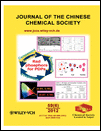
JOURNAL OF THE CHINESE CHEMICAL SOCIETY
Exploring the Frontiers of Chemical ScienceJOURNAL OF THE CHINESE CHEMICAL SOCIETY, published by WILEY-V C H VERLAG GMBH, is a vital resource in the field of chemistry, focusing on a broad array of topics pertinent to general chemistry and its advancing sub-disciplines. Established in 1954 and running through 2024, this journal serves as a significant platform for the dissemination of high-quality research, showcasing innovative findings and developments within the chemical sciences. With its Q3 category ranking and positioning at Rank #203 in General Chemistry per Scopus, it reflects the journal's commitment to research excellence and impact. While not an open-access publication, it ensures accessibility to a global audience, making it an essential tool for researchers, professionals, and students alike seeking to stay informed and engaged in the evolving landscape of chemistry.
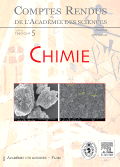
COMPTES RENDUS CHIMIE
Pioneering Research Trends in Chemistry and Chemical Engineering.COMPTES RENDUS CHIMIE, published by the prestigious Académie des Sciences in France, stands as a significant journal in the fields of chemistry and chemical engineering. With an ISSN of 1631-0748 and an E-ISSN of 1878-1543, this open-access journal has been committed to disseminating high-quality research since its transition to open access in 2020. Featuring a diverse array of studies, the journal covers innovative research trends and applications, while maintaining a Q3 category ranking in both Chemical Engineering (miscellaneous) and Chemistry (miscellaneous) as of 2023. Its Scopus rankings, positioning at #251 out of 408 in general chemistry and #169 out of 273 in general chemical engineering, highlight its growing impact within the scientific community. Authored by a global cohort of scientists and researchers, COMPTES RENDUS CHIMIE is dedicated to the advancement of knowledge and sharing insights that are vital for ongoing research and development in the chemical sciences. Located in the heart of Paris at 23 Quai de Conti, 75006, France, the journal is an essential resource for those passionate about chemistry and engineering disciplines, fostering collaboration and innovation across the world.
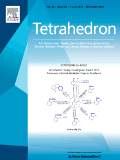
TETRAHEDRON
Transforming ideas into impactful scientific discoveries.TETRAHEDRON, published by Pergamon-Elsevier Science Ltd, is a leading peer-reviewed journal that has been pivotal in advancing the fields of Biochemistry, Drug Discovery, and Organic Chemistry since its inception in 1957. With an ISSN of 0040-4020 and an E-ISSN of 1464-5416, this journal provides a platform for the dissemination of cutting-edge research and innovative methodologies that contribute significantly to the scientific community. Recognized for its rigorous editorial standards, TETRAHEDRON has been categorized in the Q3 quartile for 2023 across its relevant fields, reflecting its solid impact within the scientific sphere. Despite the current absence of Open Access options, the journal continues to engage a diverse readership, offering invaluable insights and advancements that fuel both academic and industrial applications. With an ongoing commitment to excellence, TETRAHEDRON remains an essential resource for researchers, professionals, and students aiming to stay at the forefront of chemistry and biochemistry research.
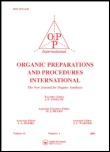
ORGANIC PREPARATIONS AND PROCEDURES INTERNATIONAL
Advancing Organic Synthesis Through Innovative MethodologiesORGANIC PREPARATIONS AND PROCEDURES INTERNATIONAL is a prominent journal in the field of organic chemistry, published by Taylor & Francis Inc. With an ISSN of 0030-4948 and an E-ISSN of 1945-5453, this journal has been a vital resource for researchers since its inception in 1971, showcasing a broad range of methodologies, protocols, and innovative applications within organic synthesis. Although categorized in the Q4 quartile for organic chemistry, the journal provides a critical platform for researchers at all levels to disseminate their findings and to access a wealth of practical organic procedures. It currently ranks #151 out of 211 in the Scopus Organic Chemistry category, underscoring its role in advancing the discipline despite its relatively modest impact factor. The journal offers a diverse collection of scholarly articles that are essential for both professional chemists and students, enriching their understanding of organic preparation techniques. Inviting contributions that encompass the full spectrum of organic synthesis, this journal serves as a valuable conduit for knowledge exchange in the ever-evolving field of organic chemistry.
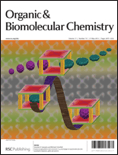
ORGANIC & BIOMOLECULAR CHEMISTRY
Connecting researchers through high-quality, open-access studies.ORGANIC & BIOMOLECULAR CHEMISTRY is a prestigious academic journal published by the Royal Society of Chemistry, dedicated to advancing the fields of organic and biomolecular chemistry. With its ISSN of 1477-0520 and E-ISSN of 1477-0539, this journal plays a pivotal role in disseminating high-quality research and contributing to the scientific community, particularly in biochemistry, organic chemistry, and physical and theoretical chemistry. Currently ranked in the third quartile for Biochemistry and the second quartile for Organic Chemistry and Physical and Theoretical Chemistry, it caters to a diverse audience of researchers, professionals, and students who seek insightful studies and reviews. With a publication history spanning since 2003 and ongoing till 2024, the journal fosters open access to its articles, encouraging the free exchange of knowledge. Situated in the vibrant academic environment of Cambridge, UK, ORGANIC & BIOMOLECULAR CHEMISTRY serves as a vital resource for innovative research at the intersection of chemical sciences.

BULLETIN OF THE CHEMICAL SOCIETY OF JAPAN
Showcasing Excellence: A Nexus for Chemical ScholarshipBULLETIN OF THE CHEMICAL SOCIETY OF JAPAN, published by the esteemed Chemical Society of Japan, serves as a pivotal platform for the dissemination of cutting-edge research in the multifaceted field of chemistry. With an ISSN of 0009-2673 and an E-ISSN of 1348-0634, this journal has been integral in fostering the growth of chemical sciences globally since its inception in 1965. The journal holds an impressive Q2 ranking in the Chemistry (miscellaneous) category, indicating its relevance and influence within the academic community, as reflected by its Scopus rank of #104/408, placing it in the 74th percentile. Although it is not an open-access journal, its rich content, which spans a wide range of topics in general chemistry, remains highly valued by researchers, professionals, and students alike, affirming its crucial role in advancing both theoretical knowledge and practical applications in chemistry. As it converges towards 2024, the bulletin continues to uphold its commitment to excellence in scientific communication and research dissemination in Japan and beyond.

Journal of Organometallic Chemistry
Unveiling the Complexities of Organometallic InteractionsJournal of Organometallic Chemistry, published by Elsevier Science SA, serves as a pivotal platform for the dissemination of cutting-edge research in the field of organometallic chemistry. With a history spanning over half a century from 1963 to 2024, this esteemed journal presents innovative findings that intersect various disciplines, including Biochemistry, Inorganic Chemistry, Materials Chemistry, Organic Chemistry, and Physical and Theoretical Chemistry, each achieving a Q3 quartile ranking in 2023. Researchers focusing on the intricate relationships between organic compounds and metals will find this journal an invaluable resource for both theoretical exploration and practical applications. Although it does not offer Open Access, the journal maintains integrity and impact, evident through its Scopus ranking which places it within the competitive landscape of its respective categories. The ISSN for this journal is 0022-328X, and the E-ISSN is 1872-8561, affirming its relevance and accessibility in the academic community.